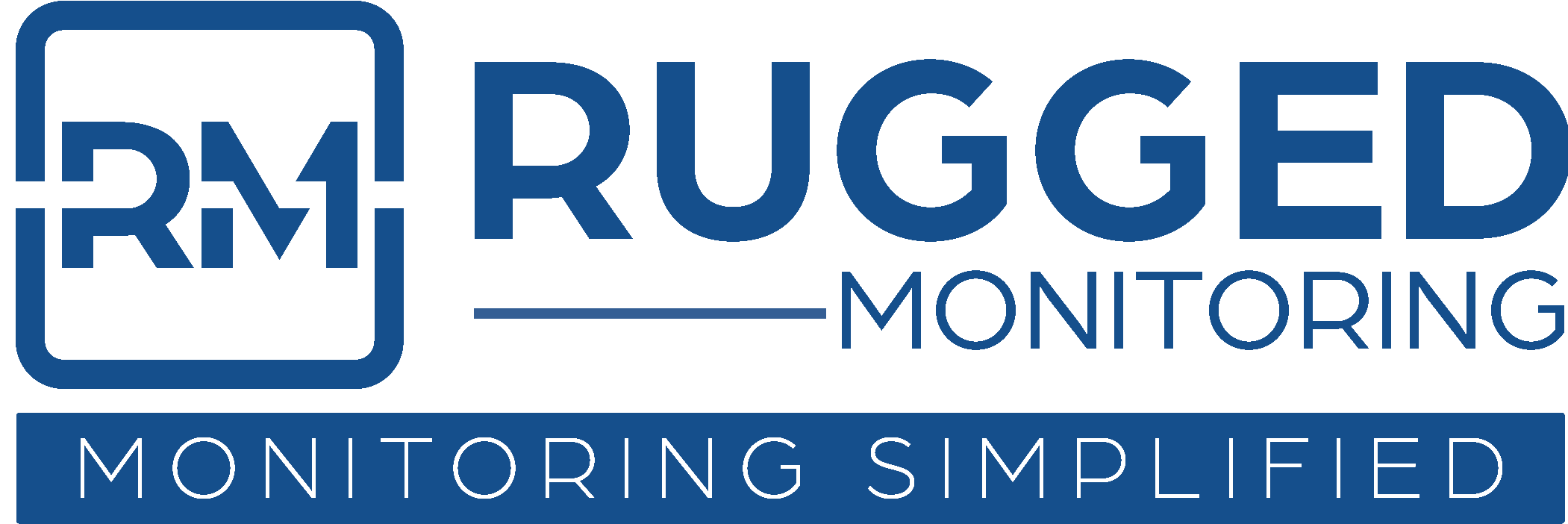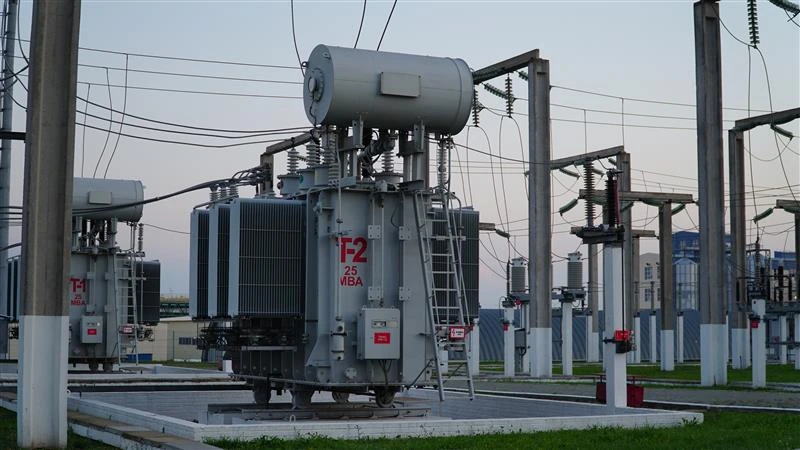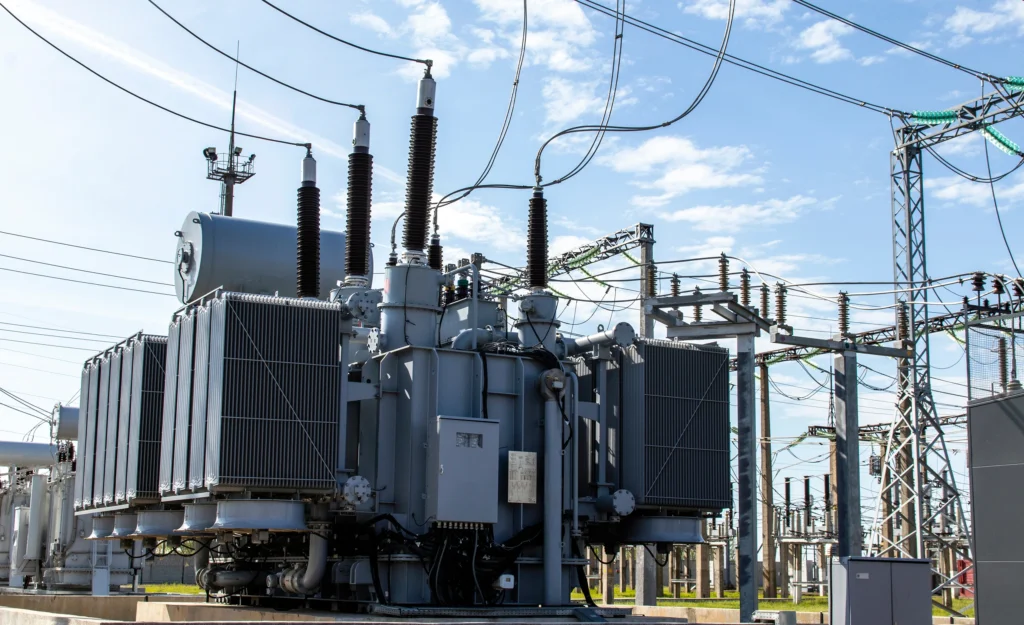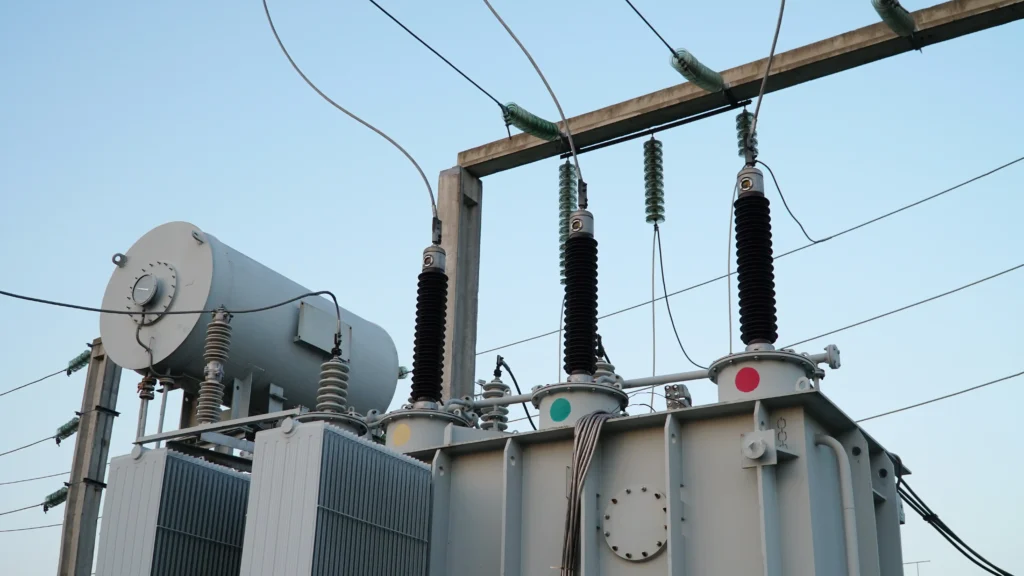Introduction:
In an era where technology stands as a pillar of operational excellence, the electrical industry is no exception. The sector has progressively leaned into more sophisticated methodologies to optimize performance and reliability. At the heart of this evolution lies the concept of Asset Reliability Management, a systematic approach to optimizing the performance and lifespan of electrical assets. Through meticulous electrical asset monitoring, this management system ensures an elevation in industry standards, propelling organizations towards a trajectory of sustainable growth and efficiency. This article explores the integral facets of asset reliability management that are pivotal in achieving excellence in electrical asset monitoring.
Comprehensive Asset Analysis
Asset Reliability Management begins with a thorough analysis of existing assets. By employing sophisticated monitoring tools, professionals can gather detailed insights into the performance, health, and utilization rates of various electrical assets, facilitating informed decision-making and strategic planning. Through constant surveillance, any discrepancies are quickly identified, allowing for timely interventions and reduced downtime.
In the demanding sector of electrical asset monitoring, a Comprehensive Asset Analysis stands as a cornerstone in achieving superior asset reliability management. This process goes beyond the rudimentary evaluation, digging deep to extract actionable insights that facilitate robust electrical asset management strategies.
The inception of any asset management strategy is an inclusive understanding of the present condition of the assets. Here, the data generated from various assets is scrutinized rigorously to gauge their existing performance levels and potential areas of improvement. Through a comprehensive asset analysis, professionals can seamlessly identify the patterns and trends, which serve as a roadmap to formulating data-driven strategies to enhance the overall efficiency and productivity of the operations.
Harnessing the power of state-of-the-art software platforms, asset managers can now engage in real-time monitoring of electrical assets, thus procuring a wealth of data that was previously inaccessible. This influx of real-time data is pivotal in making well-informed decisions that align with the organizational goals and industry benchmarks. Moreover, it enables a proactive approach to asset management, where potential issues can be addressed even before they escalate into significant problems, hence promoting a culture of preventive maintenance.
Furthermore, a comprehensive asset analysis offers a multi-faceted view of asset performance, encompassing various parameters such as energy consumption, operational efficiency, and potential areas of resource optimization. It acts as a foundation upon which sustainable practices can be built, fostering an environment that encourages continuous improvement and innovation.
Another critical facet of comprehensive asset analysis is the integration of financial insights into the asset management strategy. By aligning the asset performance data with financial metrics, organizations can attain a balanced view that facilitates optimal budget allocation and financial planning. It ensures that investments are channelled towards areas that promise the highest returns, thus enhancing the financial health of the organization.
By weaving in the principles of Asset Reliability Management into the comprehensive asset analysis, organizations can achieve a harmonious synergy between performance optimization and cost-efficiency. It sets the stage for a holistic approach to electrical asset condition monitoring, where every decision is backed by data and every strategy is aligned with the overarching goal of achieving operational excellence.
As the electrical industry evolves, the role of comprehensive asset analysis becomes increasingly significant. It serves as a vital tool in the hands of professionals, empowering them to navigate the complexities of the industry with confidence and precision. Through a thorough and detailed asset analysis, organizations can unlock the full potential of their assets, setting the pace for a future that is both sustainable and prosperous.
Predictive Maintenance Strategies
At the core of Asset Reliability Management lies predictive maintenance, a strategy that leverages data analytics to foresee potential asset failures before they occur. This approach not only minimizes unexpected downtimes but also extends the lifespan of electrical assets, culminating in substantial cost savings and operational efficiency.
In the dynamic landscape of electrical asset monitoring, Predictive Maintenance Strategies are emerging as a linchpin in fostering robust Asset Reliability Management. As the industry moves towards a more data-driven approach, the importance of leveraging predictive analytics to streamline maintenance processes cannot be overstressed.
Predictive Maintenance Strategies hinge on the utilisation of advanced algorithms and analytical models to forecast potential failures before they occur. By analyzing historical data and real-time insights, these strategies enable organizations to predict the lifespan of their assets and the likelihood of failure. Consequently, this facilitates a shift from reactive to proactive management, where maintenance can be scheduled during non-operational hours to minimize downtime and enhance productivity.
Within this spectrum, the role of electrical asset monitoring software becomes pivotal. These platforms are equipped to capture and analyze large volumes of data, paving the way for insightful analytics that form the bedrock of predictive maintenance strategies. Moreover, by integrating artificial intelligence and machine learning technologies, these platforms can further refine the analysis, providing more accurate predictions that help in optimizing the maintenance schedules.
Furthermore, Predictive Maintenance Strategies are intrinsically tied to cost savings. By enabling organizations to identify potential issues before they escalate, these strategies can significantly reduce the costs associated with unplanned downtime and emergency repairs. Moreover, they allow for a more efficient allocation of resources, ensuring that maintenance efforts are directed towards areas that necessitate immediate attention, thereby avoiding wastage of time and resources.
In addition, predictive maintenance strategies foster a culture of continuous improvement. Through regular monitoring and analysis, organizations can glean valuable insights into the performance of their assets, which can be used to enhance operational efficiencies. It creates a loop of continuous learning and adaptation, where feedback from the monitoring systems is used to fine-tune the strategies, thus leading to a gradual improvement in asset reliability and performance.
One of the pivotal benefits of implementing predictive maintenance strategies is the enhancement of safety protocols. By identifying potential failures before they occur, organizations can take preventive measures to mitigate risks, thereby fostering a safer working environment. Moreover, by avoiding catastrophic failures, organizations can protect their assets from irreparable damages, thus prolonging their lifespan and ensuring a higher return on investment.
In summation, Predictive Maintenance Strategies stand as a beacon of innovation in the realm of electrical asset monitoring, paving the way for a more efficient, safe, and cost-effective approach to Asset Reliability Management. Through the judicious use of advanced analytics and data-driven insights, organizations can foster a culture of proactive maintenance, where decisions are backed by data and strategies are aligned with the organizational goals, thereby setting the stage for a future of operational excellence and sustainable growth.
Enhancing Asset Lifecycle Management
By adopting Asset Reliability Management, organizations can markedly enhance the lifecycle management of their assets. This entails a careful assessment of asset conditions, coupled with strategic maintenance schedules, ensuring that assets function at optimum levels throughout their lifespan, ultimately fostering sustainability and cost-effectiveness.
In the contemporary sphere of the electrical industry, enhancing asset lifecycle management has surfaced as a vital cornerstone in achieving pinnacle Asset Reliability Management. This involves a strategic approach that goes beyond mere maintenance, encompassing a comprehensive review and management of electrical assets throughout their entire lifecycle, from acquisition and installation to operation and eventual retirement.
The integration of Electrical Asset Monitoring software stands as a revolutionary step in facilitating advanced asset lifecycle management. These sophisticated systems are adept at assimilating and analyzing vast arrays of data, thereby providing in-depth insights into the performance and potential longevity of assets. The monitoring software empowers professionals in the electrical industry to make informed decisions based on real-time data, which is pivotal in enhancing the operational efficiency and lifespan of assets.
Foremost among the strategies for improving asset lifecycle management is the implementation of predictive analytics. Leveraging data-driven insights, this approach enables the early detection of potential issues, thereby preventing costly downtimes and extending the asset’s lifespan. Furthermore, it allows for the implementation of timely maintenance interventions, ensuring that assets continue to operate at optimal levels, and preventing premature wear and tear.
In addition, the role of Asset Reliability Management in enhancing asset lifecycle management cannot be overemphasized. By focusing on reliability, organizations are able to develop and implement strategies that are geared towards maximizing the performance and longevity of assets. This includes the adoption of standardized procedures and best practices that foster consistent and reliable operations. Moreover, by focusing on reliability, organizations can improve the resilience of their assets, ensuring that they are able to withstand adverse conditions and continue to operate efficiently.
Furthermore, asset lifecycle management is intrinsically linked to sustainability. By optimizing the performance and extending the lifespan of assets, organizations can reduce their environmental footprint, conserving resources and minimizing waste. This aligns well with the growing emphasis on sustainable practices within the industry, fostering a greener approach to electrical asset management.
In the drive towards optimized asset lifecycle management, the role of training and skill development cannot be overlooked. Ensuring that personnel are well-trained and equipped with the necessary skills is vital in maintaining and managing assets effectively. This encompasses a broad spectrum of competencies, including technical skills, analytical capabilities, and a deep understanding of the various factors that influence the performance and longevity of assets.
By adopting a strategic approach to asset lifecycle management, organizations can realize substantial benefits, including improved operational efficiency, extended asset lifespan, and significant cost savings. It sets the stage for a holistic approach to electrical asset management, where every phase of the asset’s lifecycle is managed with a view to maximizing performance and reliability, thereby fostering a culture of excellence and innovation within the industry.
Regulatory Compliance and Safety
Compliance with industry standards and safety regulations is a fundamental aspect of electrical asset monitoring. Asset Reliability Management aids organizations in adhering to these regulations by offering tools for real-time monitoring and reporting, ensuring safety and compliance at every operational juncture.
In the dynamic landscape of the electrical industry, ensuring regulatory compliance and upholding the highest standards of safety is not just a statutory requirement but a vital responsibility of enterprises. In this regard, Asset Reliability Management stands as a formidable pillar, facilitating organizations in streamlining operations and fostering a culture of safety and compliance. It demands a stringent focus on adherence to regulatory norms while fostering an environment that prioritizes the well-being of individuals and the integrity of electrical assets.
The inception of Electrical Asset Monitoring software has marked a significant stride in simplifying the complex process of regulatory compliance. These systems are adept in offering real-time insights and comprehensive analytics, thus allowing for a seamless and automated approach towards meeting the established industry standards. Through systematic monitoring and data analysis, these platforms facilitate the identification and mitigation of potential risks, thereby promoting safety and compliance across operations.
An integral facet of regulatory compliance is the implementation of preventive measures, which are structured to identify and mitigate potential hazards before they escalate to substantial issues. Asset reliability management accentuates this approach by promoting predictive maintenance strategies that are aligned with safety protocols. By leveraging the analytical capabilities of monitoring software, organizations can anticipate potential issues and initiate preemptive measures, thus minimizing risks and fostering a safe operational environment.
Moreover, a well-designed electrical asset monitoring system is quintessential in facilitating compliance with environmental regulations. Through meticulous monitoring and management of electrical assets, organizations can significantly reduce their carbon footprint, aligning operations with sustainability goals and regulatory mandates. This not only aids in meeting compliance standards but also fosters a corporate ethos of environmental stewardship, which is increasingly becoming a pivotal consideration in the industry.
Furthermore, embracing asset reliability management allows organizations to document and report safety measures and compliance statuses with accuracy and efficiency. Automated reporting features incorporated in modern monitoring systems streamline the documentation process, enabling enterprises to maintain an up-to-date record of compliance initiatives and safety protocols. This not only ensures adherence to regulatory standards but also enhances transparency and trust with stakeholders, including employees, customers, and regulatory bodies.
Moreover, educating and training operators on safety standards and regulatory requirements forms a cornerstone in fostering a culture of compliance. It involves nurturing a workforce that is cognizant of the safety protocols and regulatory norms, thus promoting responsible and compliant operations.
As we navigate the evolving landscape of the electrical industry, the emphasis on regulatory compliance and safety continues to gain precedence. In this scenario, asset reliability management emerges vital, thus empowering organizations to navigate the complexities of compliance with ease and efficiency, thereby fostering a sustainable and safe operational environment.
Integration with Modern Technological Advances
To stay ahead in a competitive landscape, integrating modern technological advances is essential. Asset Reliability Management seamlessly aligns with innovations such as IoT and AI, offering a platform that is not only robust and reliable but also geared towards future advancements, fostering innovation and growth in the sector.
As the electrical industry is dynamic and rapidly evolving, the integration of modern technological advances forms the cornerstone of achieving optimal efficiency and asset longevity. Asset Reliability Management stands at the forefront of this revolution, offering a robust framework that facilitates the seamless incorporation of emerging technologies into existing infrastructural setups. As professionals in the electrical industry keenly venture into newer technological terrains, the role of sophisticated Electrical Asset Monitoring software cannot be overstated. Here, we dissect the critical aspects of integrating modern technological advances with asset reliability management protocols.
Leveraging Big Data and Analytics
In the age of data-driven decision-making, leveraging big data and analytics is pivotal. Asset reliability management systems, fortified with advanced analytics capabilities, empower organizations to harness the vast troves of data generated during operations. This data, when analyzed meticulously, paves the way for insightful forecasts, facilitating preventive measures and strategic planning.
IoT-Enabled Asset Monitoring
IoT (Internet of Things) has brought a paradigm shift in the way electrical assets are monitored and managed. Through IoT-enabled asset monitoring, organizations can achieve real-time tracking and reporting, which significantly enhances the accuracy and efficiency of asset management strategies. The integration of IoT devices ensures a seamless flow of information, fostering proactive maintenance and operational excellence.
Artificial Intelligence and Machine Learning
In recent years, the advent of Artificial Intelligence (AI) and Machine Learning (ML) has revolutionized asset reliability management. These technologies enable predictive maintenance strategies, wherein potential issues can be identified well before they escalate into significant problems, thereby ensuring uninterrupted operations and asset longevity. Moreover, AI and ML algorithms enhance the analytical capabilities of monitoring systems, facilitating fine-tuned performance and optimized asset utilization.
Cybersecurity in Electrical Asset Monitoring
As organizations increasingly rely on digital platforms for monitoring and managing electrical assets, the importance of cybersecurity has amplified manifold. Asset reliability management necessitates robust cybersecurity protocols to safeguard sensitive data and protect against potential cyber threats. Implementing stringent security measures ensures the integrity and confidentiality of critical operational data, fostering trust and compliance.
Cloud-Based Solutions
Cloud-based solutions have emerged as a popular choice for modern organizations seeking flexibility and scalability in their operations. Asset reliability management systems, when integrated with cloud platforms, offer enhanced accessibility and data storage capabilities. This not only streamlines operations but also facilitates remote monitoring, thereby fostering a collaborative and efficient work environment.
In the grand scheme of electrical asset management, the integration with modern technological advancements stands as a key enabler of operational excellence. It not only enhances the reliability and efficiency of electrical assets but also fosters innovation, thereby steering organizations towards a future of sustainable growth and development.
Conclusion:
Achieving excellence in asset reliability management is not just a goal, but a strategic imperative for any organization striving for long-term success. It’s about more than just keeping equipment running; it’s about optimizing operations, ensuring safety, and ultimately, driving profitability.
By embracing advanced technologies like predictive maintenance and leveraging data-driven insights, businesses can shift from a reactive to a proactive approach. This transition empowers them to detect potential issues before they escalate, leading to reduced downtime, extended equipment lifespan, and enhanced overall performance.
As we venture further into an era characterized by technological advancements, embracing Asset Reliability Management becomes not just an option, but a necessity for fostering growth, sustainability, and operational effectiveness in the electrical industry.




